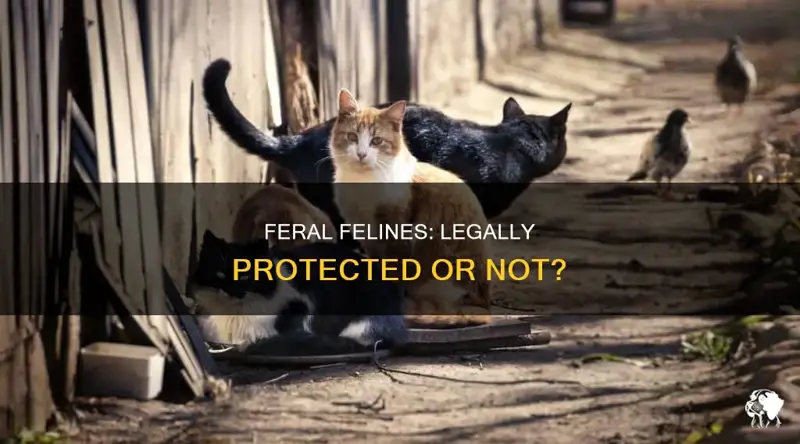In the complex tapestry of animal welfare legislation, the legal status of domestic cats, both owned and feral, prompts significant inquiry. This exploration delves into the nuances of legal protection granted to felines across various jurisdictions, the ethical implications surrounding their welfare, and crucial considerations for every cat owner and animal enthusiast.
To understand whether cats are protected by law, one must first navigate the labyrinth of animal welfare statutes. Many countries recognize animals as sentient beings, with rights that warrant legal protection. However, the specific nature of these protections can greatly differ based on local laws and cultural attitudes toward animals. In the United States, for example, animal cruelty laws are primarily state-level statutes. This decentralized approach means that the legal parameters governing the treatment and ambulation of cats fluctuate widely from one state to another.
At the federal level, while there are laws addressing animal fighting, neglect, and abuse—such as the Animal Welfare Act (AWA)—the coverage tends to be more focused on livestock and certain types of animals used in research rather than household pets like cats. Consequently, domestic cats often fall under the purview of more localized legislation. These laws can dictate acceptable living conditions, prohibitions against cruelty, and even the responsibilities of municipalities toward stray and feral populations.
Turning the lens toward feral cats, it becomes imperative to analyze their legal status. Unlike their socialized counterparts, feral cats live independently and oftentimes outside the confines of human society. Many jurisdictions incorporate specific measures to address the management of feral cat colonies. These initiatives can entail trap-neuter-return (TNR) programs, aimed at controlling feral populations humanely while providing some level of care for these animals. In areas with established TNR protocols, feral cats may receive a modicum of legal protection, primarily focused on preventing inhumane treatment and promoting their welfare.
Moreover, several cities and localities have adopted ordinances specifically designed to protect feral cat populations. Such regulatory frameworks often highlight community responsibility, whereby citizens are encouraged to participate in TNR efforts and provide care for local colonies. While some states may classify feral cats as “community cats,” granting them certain protections under local animal welfare laws, others might designate them as pests, which leads to a contrasting approach that lacks compassion and often results in detrimental outcomes for these animals.
The ethical considerations embedded within the treatment of cats cannot be overlooked. Many cat owners may be unaware of their legal obligations towards their pets. Laws typically mandate owners to provide a humane living environment, including adequate food, water, shelter, and medical care. Neglecting these basic requirements can lead to legal consequences, underscoring the moral imperative to honor the wellbeing of feline companions.
Furthermore, it is essential to note that local jurisdictions may implement breed-specific laws, impacting cats differently based on their perceived temperament or physical traits. Despite the variety of felines, breed biases can unfortunately affect their treatment under the law. Owners of specific breeds may find themselves navigating additional regulations that dictate how they must care for their cats, thus complicating the ownership experience.
As pet owners, it is also important to be cognizant of the repercussions of abandoning or relinquishing a cat. Many regions enforce regulations that make it illegal to abandon pets, reflecting a societal commitment to animal welfare. Failing to adhere to these laws may result in legal ramifications and could lead to increased populations of stray and feral cats, perpetuating cycles of neglect and suffering.
Awareness of the prevalence of cat overpopulation is another significant aspect of this discussion. The unchecked reproduction of domestic cats has led to soaring feral populations in urban and rural areas alike, often overwhelming local resources dedicated to animal control and welfare. Advocacy for spaying and neutering campaigns is crucial in mitigating this crisis. Some jurisdictions offer incentives or legal requirements to ensure responsible breeding practices and encourage sterilization, which contributes to the larger dialogue surrounding cat welfare.
Moreover, pet owners play a pivotal role in civic responsibility. Engaging with local animal shelters and advocacy groups can facilitate an understanding of the myriad laws designed to protect cats. These organizations typically provide resources that can inform owners about the legal obligations associated with pet ownership, including the necessity of microchipping, licensing, and adhering to local regulations.
Legal protections for cats, whether they are beloved companions or wandering ferals, encapsulate a blend of societal attitudes toward animal welfare and municipal commitment to humane treatment. It is incumbent upon pet owners to remain informed and proactive about the evolving landscape of animal law, ensuring not only compliance but also the promotion of compassion and respect for all feline lives.
In conclusion, while legal protections for cats vary significantly across geographic and cultural spectrums, it is clear that understanding these laws is vital for responsible pet ownership. The interplay of legislation, ethics, and community engagement ultimately sets the stage for a society that values the lives of its feline residents and endeavors to guard their wellbeing through comprehensive legal frameworks.






